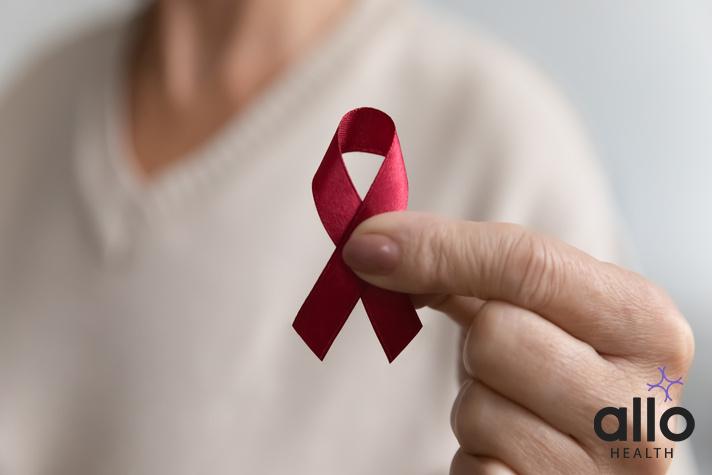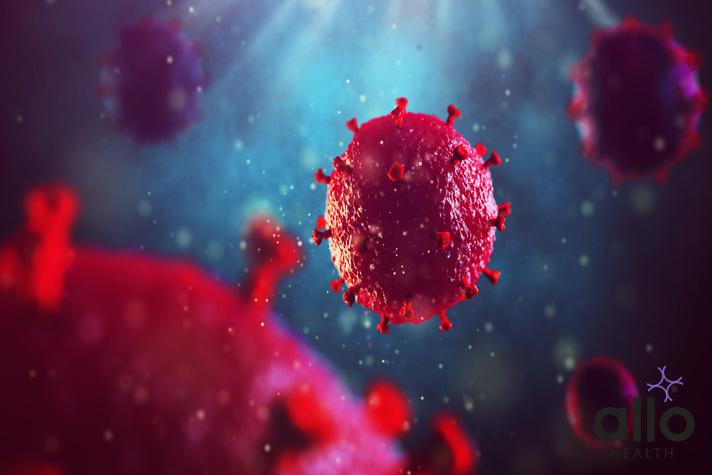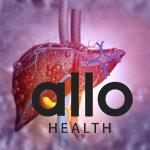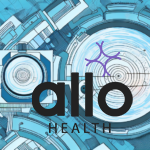Can HIV Be Transmitted Through Nipples? Understanding the Risks

Allo Health is dedicated to personalized well-being, offering support and trusted information tailored to individual health goals. The platform emphasizes human-generated content, led by a distinguished medical team of experts, including physicians and sexual health specialists. Their commitment to credibility involves rigorous fact-checking, authoritative research, and continuous updates to ensure accurate, up-to-date information. Allo Health's unique approach goes beyond conventional platforms, providing expert-led insights and a continuous commitment to excellence, with user feedback playing a crucial role in shaping the platform's authoritative voice.

Dr.Sushma.V completed MBBS degree from BGS GIMS,bangalore
Why This Was Upated?
Our experts continually monitor the health and wellness space, and we update our articles when new information became available.
Updated on 15 March, 2024
- Article was updated as part of our commitment to diversity, equity, and inclusion.

"The following blog article provides general information and insights on various topics. However, it is important to note that the information presented is not intended as professional advice in any specific field or area. The content of this blog is for general educational and informational purposes only.
Book consultation
The content should not be interpreted as endorsement, recommendation, or guarantee of any product, service, or information mentioned. Readers are solely responsible for the decisions and actions they take based on the information provided in this blog. It is essential to exercise individual judgment, critical thinking, and personal responsibility when applying or implementing any information or suggestions discussed in the blog."
When it comes to the transmission of HIV, it’s crucial to understand the modes of transmission and how to protect yourself and others. A question that often arises is, “Can HIV be transmitted through nipples?” This article aims to provide a comprehensive answer to this query, backed by scientific research and expert opinions.
Understanding HIV Transmission
HIV (Human Immunodeficiency Virus) is a virus that attacks the immune system, the body’s natural defense against illness. The virus is primarily transmitted through direct contact with certain body fluids of a person who has HIV. These fluids include blood, semen, vaginal and rectal fluids, and breast milk. Transmission can occur during unprotected sex, sharing needles or syringes, and from mother to child during pregnancy, childbirth, or breastfeeding.
Can HIV Be Transmitted Through Nipples?
The concern about HIV transmission through nipples usually pertains to activities such as nipple-sucking or biting during sexual encounters. It’s important to clarify that HIV is not transmitted through skin-to-skin contact, saliva, or touching alone. Therefore, the act of touching or sucking nipples in itself does not transmit HIV.
However, if there are open sores or bleeding in the mouth or on the nipples, there is a theoretical risk of HIV transmission if one of the parties is HIV positive. The risk is primarily due to the potential exchange of blood or other body fluids that can carry the virus.
Reducing the Risk
For sexually active individuals, reducing the risk of HIV transmission involves:
- Using barriers such as condoms during sexual activities.
- Getting tested regularly for HIV and other sexually transmitted infections (STIs) with your partner.
- Consider pre-exposure prophylaxis (PrEP) if you are at high risk of HIV infection.
- If HIV-positive, adhering to antiretroviral therapy (ART) maintains an undetectable viral load, which makes the virus untransmittable (U=U).

Modes of HIV Transmission
HIV is transmitted through contact with specific body fluids from a person with HIV. These fluids include:
- Blood: This includes menstrual blood and blood that might be present in saliva, urine, and feces due to bleeding gums or cuts.
- Semen and Pre-seminal Fluid (“Pre-cum”)
- Vaginal Fluids
- Breast Milk
Infections occur when these fluids enter the bloodstream of an HIV-negative person, typically through mucous membranes found in the rectum, vagina, penis, and mouth, or through cuts and abrasions.
Fluids Unlikely to Transmit HIV
HIV transmission is also possible, though less common, through contact with other body fluids if one is a healthcare worker:
- Cerebrospinal Fluid: Found around the brain and spinal cord.
- Synovial Fluid: Found around the joints.
- Amniotic Fluid: Surrounds a developing fetus in the womb.
How HIV is Not Spread
It’s essential to debunk common myths about HIV transmission. HIV is not spread through:
- Sweat
- Tears
- Saliva (except in extremely rare cases where it contains blood and there are open sores in the mouth)
- Feces
- Urine
This means everyday activities like touching, hugging, kissing, sharing utensils, or using the same toilet facilities do not transmit HIV.
Key Takeaways
- Prevention: Knowing and understanding how HIV is transmitted are the first steps in preventing new infections.
- Treatment as Prevention: People with HIV who maintain an undetectable viral load through ART cannot sexually transmit the virus to their partners.
- Stigma Reduction: Dispelling myths about how HIV is transmitted helps reduce stigma and supports a more informed and compassionate society.
This information underscores the importance of both preventive measures for HIV-negative individuals and adherence to treatment for those living with HIV. By staying informed and taking appropriate precautions, we can work together to prevent the spread of HIV and support those living with the virus.

Understanding and Preventing HIV Transmission
The transmission of HIV remains a critical public health issue worldwide. Understanding the most common ways HIV is transmitted helps in preventing new infections and in managing the virus among those already living with HIV. Here’s a concise overview of the primary methods through which HIV can be passed from one person to another:
- Injecting Drugs: The reuse or sharing of needles, syringes, or other drug injection equipment is a high-risk behavior for HIV transmission. This includes the use of equipment for injecting heroin, methamphetamines, steroids, hormones, or other substances.
- Tattoos and Body Piercings: Always ensure that tattoos or body piercings are done by professionals using sterile equipment. Proper sterilization between uses is crucial to prevent HIV transmission.
- Vaginal or Anal Sex Without Barriers: Engaging in vaginal or anal sex without using condoms or other barriers increases the risk of HIV transmission. This risk is heightened if an HIV-negative partner is not taking Pre-Exposure Prophylaxis (PrEP) and if a partner living with HIV is not taking HIV drugs or has a detectable viral load.
- Oral Sex: While less risky, giving oral sex can still pose a risk for HIV transmission, especially if there are open sores or bleeding gums in the mouth.
- Mother-to-Child: HIV can be transmitted from a mother to her child during pregnancy, childbirth, or breastfeeding. However, with proper medical care and HIV drugs given during pregnancy, the risk of transmission can be significantly reduced.
Preventive Measures
- Treatment as Prevention (TasP): For people living with HIV, taking HIV drugs regularly and maintaining an undetectable viral load prevents the transmission of HIV to sexual partners.
- Pre-Exposure Prophylaxis (PrEP): For HIV-negative individuals, taking PrEP can significantly reduce the risk of acquiring HIV.
- Use of Barriers: Condoms, dental dams, and other barriers are effective in reducing the risk of HIV transmission during sex.
Risk Levels of Sexual Activities
- Highest Risk: Receptive anal sex is the riskiest sexual activity for HIV transmission.
- High Risk: Receptive vaginal intercourse and insertive anal sex also pose significant risks.
- Moderate to Low Risk: Insertive vaginal intercourse and giving oral sex carry a lower risk, but precautions should still be taken.
- Lowest Risk: Activities like mutual masturbation, fingering, and fisting are extremely low risk, provided there are no open cuts or sores.
- Post-Exposure Prophylaxis (PEP): If exposed to HIV, starting PEP within 72 hours can greatly reduce the chance of seroconversion.
Understanding these transmission methods and adopting preventive measures can significantly reduce the risk of HIV transmission. It’s also crucial for individuals living with HIV to adhere to their treatment regimen to maintain an undetectable viral load, effectively preventing the transmission of the virus to others.
The Importance of HIV Testing and Early Diagnosis
HIV testing is a crucial step in both the prevention and management of HIV/AIDS. Through early diagnosis, individuals can gain access to treatments that can significantly improve their quality of life and reduce the risk of transmitting the virus to others. Below, we delve into the benefits of early testing and the various methods available.
- Early Access to Treatment: Diagnosing HIV at an early stage allows individuals to start antiretroviral therapy (ART) sooner, which can slow the progression of the virus, improve long-term health outcomes, and reduce the likelihood of transmitting HIV to others.
- Informed Decisions: Knowing your HIV status enables you to make informed decisions about your health and sexual practices, helping to prevent the spread of HIV.
- Psychological Benefits: Early testing provides peace of mind and reduces the anxiety associated with the uncertainty of one’s HIV status.
- Community Health: Regular testing and early diagnosis play critical roles in public health efforts to reduce the spread of HIV and manage the epidemic.
Several types of HIV tests are available, each with different window periods (the time from exposure to when a test can accurately detect an infection).
- Antibody Tests: These tests detect antibodies produced in response to HIV infection. Most rapid tests and home tests are antibody tests, which can typically detect HIV within 3-12 weeks after exposure.
- Antigen/Antibody Tests: Also known as combination or fourth-generation tests, these detect HIV antibodies and antigens (specific parts of the virus). Antigen/antibody tests can usually detect HIV 2-6 weeks after exposure and are more commonly used in medical settings.
- Nucleic Acid Tests (NATs): NATs look for the actual virus in the blood. They are costly and not routinely used for HIV screening except in specific situations, such as for individuals with a high risk of exposure or when a recent infection is suspected. NATs can detect HIV 7-28 days after exposure.
- Routine Testing: The Centers for Disease Control and Prevention (CDC) recommends that everyone between the ages of 13 and 64 get tested for HIV at least once as part of routine healthcare. For those with specific risk factors, more frequent testing is advised.
- After Potential Exposure: If you believe you’ve been exposed to HIV, it’s important to get tested immediately; however, you may need to be retested after the window period for the type of test you’re taking to ensure an accurate result.
- High-Risk Groups: Individuals with high-risk factors, such as those with multiple sexual partners, individuals practicing unprotected sex, and people who inject drugs, should consider getting tested every 3 to 6 months.
Understanding when and how to get tested for HIV is key to maintaining your health and preventing the spread of the virus. If you’re sexually active or have been exposed to potential risk factors for HIV, getting tested regularly is one of the most responsible actions you can take for yourself and your community.
Understanding Pre-Exposure Prophylaxis (PrEP)
Pre-exposure prophylaxis, or PrEP, is a preventive approach for people at high risk of HIV. It involves taking a daily medication that significantly reduces the chances of getting HIV. Here’s a brief overview:
What is PrEP?
PrEP is a daily pill for individuals who do not have HIV but are at substantial risk of infection. The pill contains two medicines that prevent HIV from establishing a permanent infection if exposure occurs. When taken consistently, PrEP is about 99% effective in preventing HIV from sexual contact and at least 74% effective among those who inject drugs.
Who Should Consider PrEP?
PrEP is recommended for:
- Men who have sex with men (MSM) and engage in unprotected sex.
- Heterosexual men and women who don’t consistently use condoms with partners of unknown HIV status.
- People who inject drugs and share equipment.
- Individuals with an HIV-positive partner.
How to Start PrEP
Consult a Healthcare Provider: Start with an HIV test to ensure you’re negative. Discuss PrEP’s benefits and side effects with your provider.
Initiation Process: If PrEP is a good fit, you’ll receive a prescription. It’s important to take the medication every day simultaneously for maximum effectiveness.
Adherence: Regular follow-ups every 3 months are necessary for health monitoring and HIV testing. Consistent adherence to the medication is crucial for its effectiveness.
In summary, for those at high risk of HIV, PrEP offers an effective means of prevention. It requires a commitment to daily medication and regular healthcare visits but provides significant protection against HIV.

Preventing Mother-to-Child Transmission
Preventing the transmission of HIV from a mother to her child during pregnancy, childbirth, and breastfeeding is a critical aspect of HIV management. With appropriate strategies, the risk of mother-to-child transmission (MTCT) can be significantly reduced.
Strategies During Pregnancy and Childbirth
Use of Antiretroviral Therapy (ART): The most effective way to prevent MTCT is for the HIV-positive mother to be on effective ART during pregnancy. Starting ART as early as possible during pregnancy can reduce the viral load to undetectable levels, thereby minimizing the risk of transmitting the virus to the baby.
Prenatal Care: Regular prenatal visits allow healthcare providers to monitor the health of both the mother and the fetus, adjust ART as necessary, and plan for a safe delivery.
Delivery Planning: The mode of delivery (vaginal birth vs. cesarean section) may be influenced by the mother’s viral load and other clinical factors. A cesarean section may be recommended if the viral load is detectable near the time of delivery to further reduce the risk of transmission.
Breastfeeding Safely With HIV
Breastfeeding poses a risk for HIV transmission from mother to child. However, the benefits of breastfeeding for infant health and development need to be balanced with this risk.
Antiretroviral Drugs During Breastfeeding: HIV-positive mothers on ART with an undetectable viral load can breastfeed, but it’s crucial to continue ART throughout the breastfeeding period to maintain viral suppression and reduce the risk of transmission.
Exclusive Breastfeeding: Mixed feeding (combining breastfeeding with other foods or liquids) has been associated with a higher risk of HIV transmission compared to exclusive breastfeeding. If breastfeeding is chosen, exclusive breastfeeding is recommended for the first 6 months, followed by appropriate weaning once complementary foods are introduced.
Regular Monitoring: Both the mother’s and the baby’s HIV status should be closely monitored throughout the breastfeeding period. This includes regular viral load testing for the mother and HIV testing for the baby to ensure early detection and intervention if needed.
Alternatives to Breastfeeding: In some cases, using formula milk may be the safest option to eliminate the risk of HIV transmission, especially where safe, affordable, and feasible alternatives to breast milk are available. Healthcare providers can offer guidance based on the mother’s health, viral load, and individual circumstances.
Implementing these strategies effectively requires comprehensive care and support from healthcare providers, ensuring both the mother’s and the child’s health are prioritized. With the right interventions, the risk of MTCT can be reduced to less than 2%, allowing children of HIV-positive mothers to start their lives HIV-free.
Myths and Misconceptions About HIV Transmission
Despite advancements in our understanding of HIV/AIDS, numerous myths and misconceptions persist about how the virus is transmitted. Addressing these myths is crucial for preventing stigma and promoting informed protective measures.
Debunking Common Myths
Myth 1: HIV can be transmitted through casual contact.
Fact: HIV cannot be transmitted through casual contact such as hugging, shaking hands, sharing toilets, or through mosquito bites. HIV is transmitted through specific routes, including unprotected sexual contact, sharing needles, and from mother to child during pregnancy, birth, or breastfeeding.
Myth 2: Mosquitoes can spread HIV.
Fact: HIV cannot be transmitted by mosquitoes or any other insects. When mosquitoes bite, they do not inject the blood of the person or animal they have previously bitten into the next person they bite.
Myth 3: Sharing utensils or drinking glasses can spread HIV.
Fact: HIV is not transmitted by saliva nor through sharing utensils, dishes, or drinking glasses. The virus cannot survive long outside the human body, and it cannot be transmitted through everyday social contact.
Conclusion
To directly address the question, HIV cannot be transmitted through nipples by mere contact or sucking if there are no open sores or blood involved. It’s essential to focus on the known routes of HIV transmission and take appropriate precautions to protect oneself and others. If you have concerns about HIV or are seeking ways to prevent HIV transmission, consult a healthcare provider for personalized advice and support.
Remember, knowledge and prevention are key in the fight against HIV. By understanding the facts and taking proactive measures, we can work together to reduce the spread of this virus.
Most Asked Questions
-
Can HIV be transmitted through casual contact like hugging or sharing utensils?
No, HIV cannot be transmitted through casual contact such as hugging, shaking hands, or sharing utensils and dishes. The virus is transmitted through specific body fluids, including blood, semen, vaginal fluids, and breast milk, not through casual contact or saliva.
-
Is it safe to breastfeed if I am living with HIV?
Women living with HIV can transmit the virus to their baby through breast milk. However, if the mother is on effective antiretroviral therapy (ART) and maintains an undetectable viral load, the risk of transmission through breastfeeding can be significantly reduced. It's essential to consult healthcare providers for guidance tailored to individual circumstances.
-
How effective is Pre-Exposure Prophylaxis (PrEP) in preventing HIV?
When taken as prescribed, PrEP is about 99% effective in preventing HIV infection from sexual contact and at least 74% effective among those who inject drugs. Adherence to the daily medication regimen is crucial for its effectiveness.
-
Can I get HIV from tattoos or body piercings?
HIV transmission through tattoos or body piercings is possible but rare, provided the equipment used is sterile and not reused. Always ensure that tattoos and piercings are performed by licensed professionals using new or sterilized equipment.
-
What should I do if I think I've been exposed to HIV?
If you believe you've been exposed to HIV, seek medical attention immediately. Post-exposure prophylaxis (PEP) is most effective when started within 72 hours after exposure. PEP involves taking antiretroviral medications for 28 days to prevent HIV seroconversion.







































